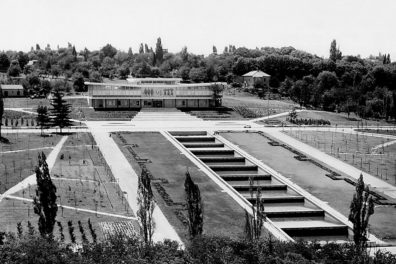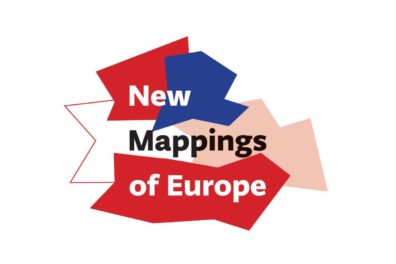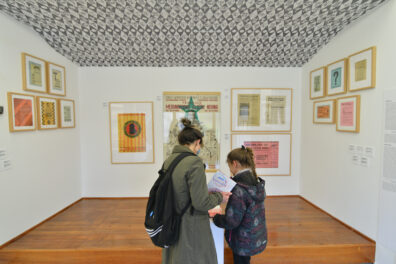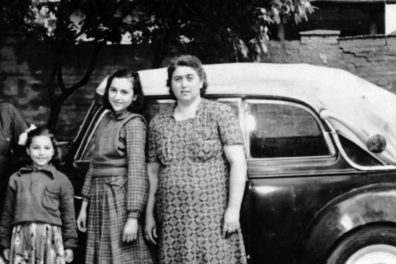The Nineties: A Glossary of Migrations
05.12.2019-01.03.2020
The Museum of Yugoslavia announces The Nineties: A Glossary of Migrations, which involves the participation of thirty contemporary artists and art and activist collectives engaged in the theme of the population’s mass migrations to and from Serbia in the 1990s.
The exhibition opens on December 5, 2019, at 6 pm at the May 25th Museum. Also, this is the first showcasing to take place within the newly renovated May 25th Museum, which is part of the Museum of Yugoslavia complex.
“The primary concern of the exhibition is to map the different forms of engagement, from the 1990s to the present moment, which have, in the field of art, addressed social, cultural, political and legal issues created in these extremely complex and traumatic migration processes, leaving the documentary-historiography approach in the background. Apart from the artistic standpoints, the exhibition includes certain activist and civil sector initiatives and organizations, however, primarily, those either initiated by artists, or those which included in their work the collaboration with contemporary artists,” – the curators of the exhibition, Simona Ognjanović and Ana Panić from the Museum of Yugoslavia, emphasize, adding: “The exhibition also introduces a parallel narrative line revealing documents such as laws, political agreements and national strategies, which greatly determined the statuses of people affected by the migrations. The aim of such an expositional structure is, in part, to shed light on the wider context in which the artworks and initiatives were created or those which they refer to.”
Visitors will be able to discover the content of the exhibition by moving through a spatial network of concepts, that is, a “glossary of migrations,” which will facilitate their reading and interpretation of the exhibition.
“The Glosssary represents an alternative to the dominant discourses through which, in the domain of the law, public politics and academia, these issues are dealt with and thought about. It opens questions regarding the reaches and role of art, activism, as well as public institutions, in the reconstruction of the past, and the morphing of ‘common knowledge’ that dominate the public sphere,” – explain the exhibition’s curators.
The glossary is the collaborative work of the curators and participants of the exhibition and includes the following concepts, syntagms and idioms: address, unlawful necessity, cleaning, man, dignity/solidarity/internationalism, courage and/or cowardice, inventory, (the) erased, Yugoslavism, one way ticket, suitcase, computer cleansing/futile hope, house or home, place, discomfort, (the) other, plan, subject, friends, hands, holes, land of safety, free temporary territory, transfer, sorrow, uprising, law, country/territory, lust for life.
The participants of the exhibition The Nineties: A Glossary of Migrations, are: Association Apsolutno, Ademir Arapović, Aleksandar Kelić, Aleksandar Milosavljavić, Aleksandrija Ajduković, Čarli Kejs (Charley Case), Dejan Dimitrijević/Nebojša Šerić Shoba, Dušica Dražić, (Dionis Escorsa), Helena Klakočar, Jusuf Hadžifejzović, Kiosk – Platform for Contemporary Art, Milena Maksimović, Goranka Matić, Collective E-I-Migrative Art, Ana Miljanić/Center for Cultural Decontamination, Milorad Mladenović, Mirsad Jazić, Ivana Momčilović/Loran Wanson, Tanja Ostojić, Vesna Pavlović, Vuk Branković, Nikola Radić Lucati, Vladimir Radojičić, Vahida Ramujkić, Rena Rädle/Vladan Jeremić, Bálint Szombathy, Škart, Čedomir Vasić, Group 484, Cardan – Remembrence Culture, the Vojvodina Civic Centre, the Joint Campaign – Roof Overhead, and Women in Black.
A series of accompanying programs will be organized for the duration of The Nineties: A Glossary of Migrations exhibition. These will include specialized guided tours by some of the artists and participants of the exhibition, public discussions, art events and winter schools for students.
The team of the Museum of Yugoslavia responsible for the realization of the exhibition is lead by Simona Ognjanović and Ana Panić, curators and exhibition conceptualists. Architect Milorad Mladenović designed the exhibition and the visual identity was created by Zoran Pantelić.
The exhibition is realized as part of the project New Mappings of Europe, supported by the European Commission through the Creative Europe program and the Ministry of Culture of the Republic of Serbia.
The exhibition will run at the Museum of Yugoslavia until March 1, 2020.


The Origins: The Background for Understanding the Museum of Yugoslavia
Creation of a European type of museum was affected by a number of practices and concepts of collecting, storing and usage of items.

New Mappings of Europe

Museum Laboratory
Starting from the Museum collection as the main source for researching social phenomena and historical moments important for understanding the experience of life in Yugoslavia, the exhibition examines the Yugoslav heritage and the institution of the Museum

